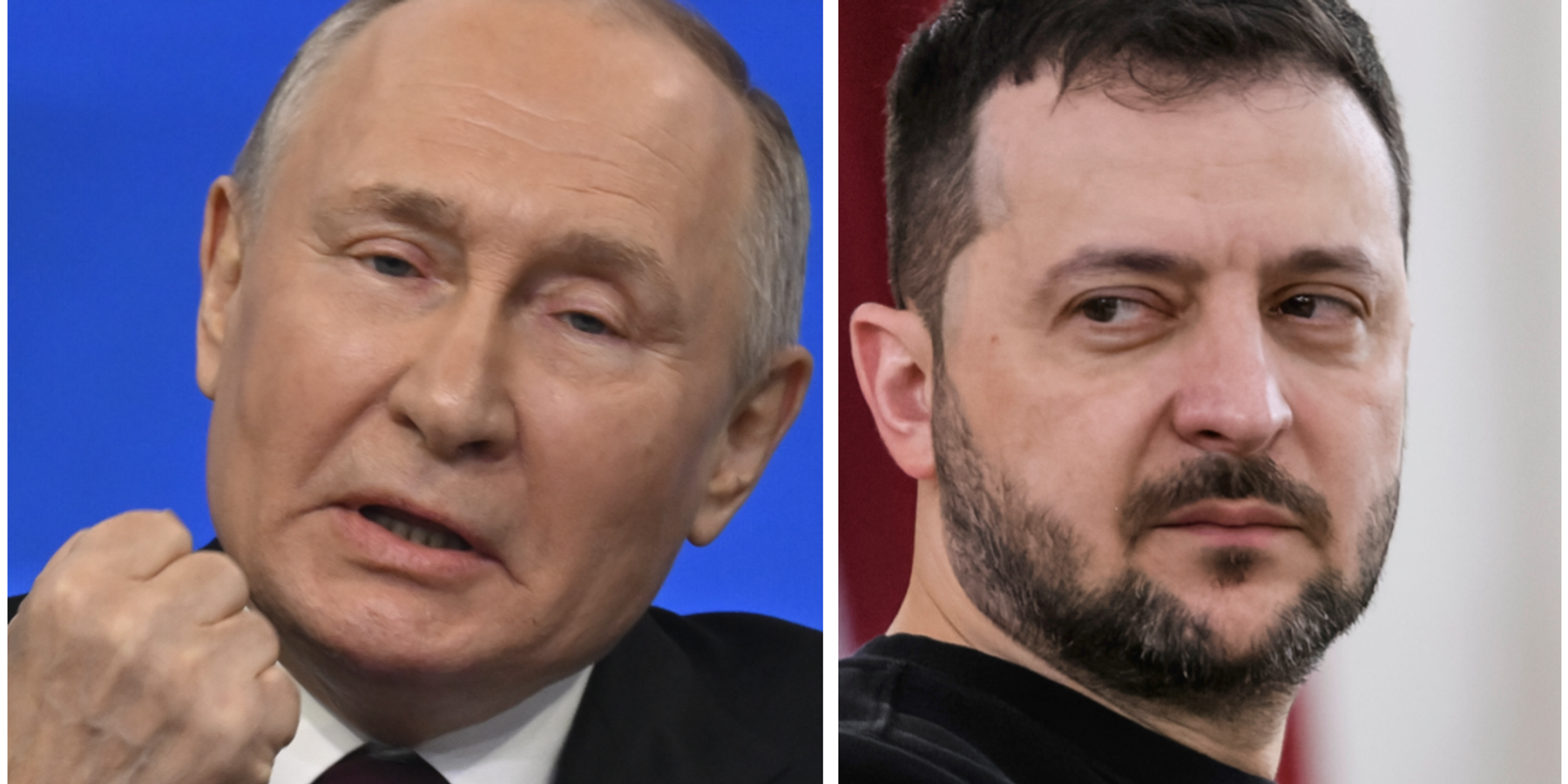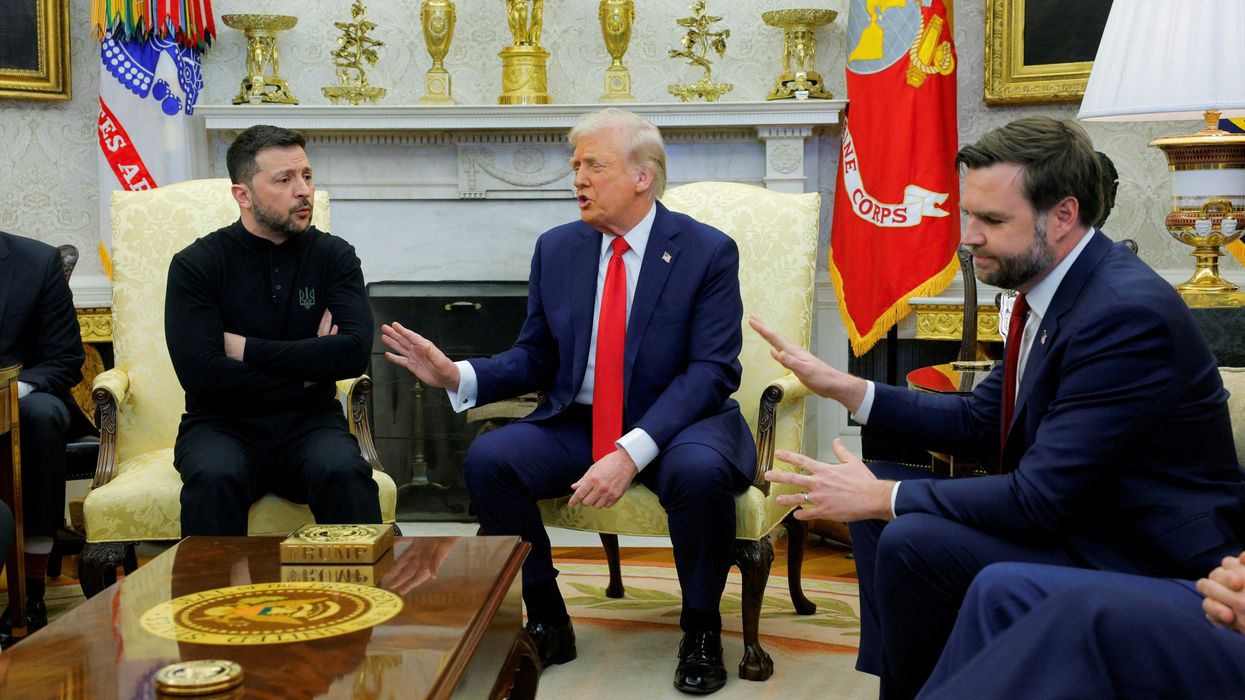The memos presented by Ukraine and Russia at their direct talks in Istanbul on Monday make it absolutely clear that, absent a strong U.S. intervention based on a detailed U.S. peace plan, there will be no peace settlement in Ukraine.
It is not just that several of the positions on both sides are completely mutually incompatible; they suggest that at present neither side is in fact interested in an early peace.
The Ukrainian memo, presented before the talks, sets a “full and unconditional ceasefire in the sky, on land and at sea as a necessary background and prerequisite for peace negotiations.” Russia has already rejected this and will continue to do so — naturally, because it would mean giving up its main point of leverage for nothing in return. Nor indeed is a fragile and unstable ceasefire in the interests of Ukraine or the West. If Ukraine is to begin the extremely challenging process of economic reconstruction and democratic reform, it needs a stable and permanent peace.
The Ukrainian memo also states that “no restrictions may be imposed on the number, deployment, or other parameters of the Armed Forces of Ukraine, as well as on the deployment of troops of friendly foreign states on the territory of Ukraine.” Russia has already stated that it will not under any circumstances accept the presence of Western troops in Ukraine since it sees this as NATO membership in all but name. European leaders have also stated that a European force could only be deployed with a U.S. guarantee of support, a condition which the Trump administration has rejected.
The Ukrainian memo continues, “some sanctions may be lifted from Russia, but in stages and only gradually, with a mechanism for resuming sanctions if necessary (snapback). Frozen Russian sovereign assets are used for reconstruction or remain frozen until reparations are paid.” Moscow will obviously not agree to a final peace without the lifting of sanctions or firm assurances that they will be lifted.
On one key point, the Ukrainian memo does leave room for compromise: “Ukraine is not forced to be neutral. It can choose to be part of the Euro-Atlantic community and move towards EU membership. Ukraine’s membership in NATO depends on consensus within the Alliance.” Russia has in fact already publicly stated that Ukraine has the sovereign right to seek EU membership. And on NATO membership, the memo is correct that this does not depend on Ukraine but on unanimous agreement (not merely “consensus”) among existing members.
The Trump administration (or any European government) is therefore in a position to block Ukrainian NATO membership without reference to Kyiv. The problem for Moscow however is that Poland and other European members of NATO continue to declare their support for Ukraine’s membership; and, if the Democrats win the U.S. elections in 2028, they could overturn Trump’s veto. The Russians therefore are insisting on a Ukrainian constitutional commitment to neutrality and/or a U.S.-Russian treaty to that effect — which Kyiv is refusing.
Meanwhile, accounts of the Russian memo presented in Istanbul, as reported by the Russian media, include reported conditions for a ceasefire that Moscow must know are totally unacceptable to the Ukrainians — though this does not in itself rule out the possibility of Russia being willing to compromise on some of them in a final settlement if it meets its goals in other areas — especially bilateral relations with Washington.
They include “complete withdrawal of the Ukrainian Armed Forces from Donbas, Kherson and Zaporizhia regions. The second option for the ceasefire is a ban on major redeployments of the Ukrainian Armed Forces, the abolition of mobilization and martial law, and the cessation of supplies of foreign weapons.”
This is not going to happen, absent Russian victory on the battlefield. Ukraine will never agree to surrender territory that it still holds, nor will European countries agree to end all weapons supplies.
In return for a ceasefire, the Russian memo as reported calls for “international recognition of these regions and Crimea as part of Russia.” This is utterly pointless. It is not just that neither Ukraine nor Western countries will legally recognize the Russian annexations; China, India and South Africa have also refused this, and will continue to do so. The best that Russia can hope for (as was indeed provisionally agreed at the Istanbul talks in March 2022) is to defer the legal status of these territories for future negotiation.
As part of an eventual peace settlement, Russia is also apparently demanding that:
- Kyiv must announce the date of the presidential and Rada elections, which must take place no later than 100 days after the lifting of martial law;
- The size of the Ukrainian military be limited;
- A legal ban on Nazi & neo-Nazi propaganda. Dissolution of "nationalist" parties & organizations;
- Restoration of rights of the Ukrainian Orthodox Church;
- A peace treaty between Russia and Ukraine must be approved by a legally binding resolution of the U.N. Security Council;
- It is necessary to ensure the full rights, freedoms and interests of Russian speakers;
- Renouncing mutual claims with Ukraine in connection with damage from military operations.
Formal endorsement of the peace treaty by the UNSC makes very good sense. The other Russian conditions however will be exceptionally difficult for Kyiv to meet under Russian pressure — not least because in several cases they would need the legal approval of the Ukrainian parliament, which is very unlikely to give it.
Only Washington can offer Russia compromises in other areas (for example on U.S. force deployments in Europe) that could persuade Moscow to reduce these conditions to reasonable levels; and only Washington could then pressure Kyiv and European capitals into accepting them. Some of the Russian conditions (including minority rights) are not only legitimate, but essential if postwar Ukraine is to progress towards eventual EU membership, but a formula has to be found whereby Ukraine can agree to them as a starting point of the EU accession process, and not as surrender to Moscow.
The Trump administration can be forgiven its exasperation with the state of the peace process. Nonetheless, it would be a mistake — from the point of view of America’s own interests — for the U.S. to walk away from it. Apart from the fact that sooner or later Washington would inevitably be dragged back in, three recent developments have highlighted how a prolonged continuation of the war will involve serious risks for the U.S.
Thus the weekend's devastating Ukrainian attack on Russia’s nuclear-capable bomber fleet undermines nuclear security between the U.S. and Russia.
The bipartisan bill to go before the U.S. Senate next week (with the encouragement of the EU presidency) proposes 500% tariffs on imports from countries that buy Russian oil and gas. Presumably the senators are thinking of China. They appear to have forgotten that it also means India (and other U.S. partners). India has no intention of bowing to a U.S. diktat that would radically increase its energy costs and undermine its economy; and the imposition of 500% tariffs on India would ruin a vital U.S. relationship in Asia.
Finally, the EU has passed a new package of sanctions against Russia including measures to target the so-called “shadow fleet” of internationally-flagged tankers transporting Russian energy exports. This is also an affront to countries like India that buy this energy — and consider that they have a perfect right to do so under international law, since Western sanctions against Russia have not been approved by the United Nations, or agreed by themselves.
Last month, an Estonian patrol boat attempted to board a tanker bound for Russia in international waters, and Moscow sent a fighter jet to warn the Estonians off. Finland and Sweden have also threatened to detain such ships. Russia in response briefly detained a Liberian-flagged Greek tanker exiting Estonia through Russian waters. Russian politicians have threatened retaliatory seizures: "Any attack on our carriers can be regarded as an attack on our territory, even if the ship is under a foreign flag," warned Alexei Zhuravlev, the deputy chairman of Russia's parliamentary defense committee.
If both sides stick to their positions, then naval clashes will be not only possible, but certain. It is also obvious that these NATO members would never engage in such wildly reckless behavior unless they believed that in the event of such clashes, the U.S. military would come to their aid. The Trump administration needs to rein them in very firmly indeed. It also however needs to continue trying to bring an end to the Ukraine War, for as long as the war continues, so will the danger of a local collision between Russia and NATO members, from which the U.S. will not be able to remain aloof.
- Why a temporary ceasefire in Ukraine is pointless ›
- Why Trump must not walk away from Ukraine War talks ›
















